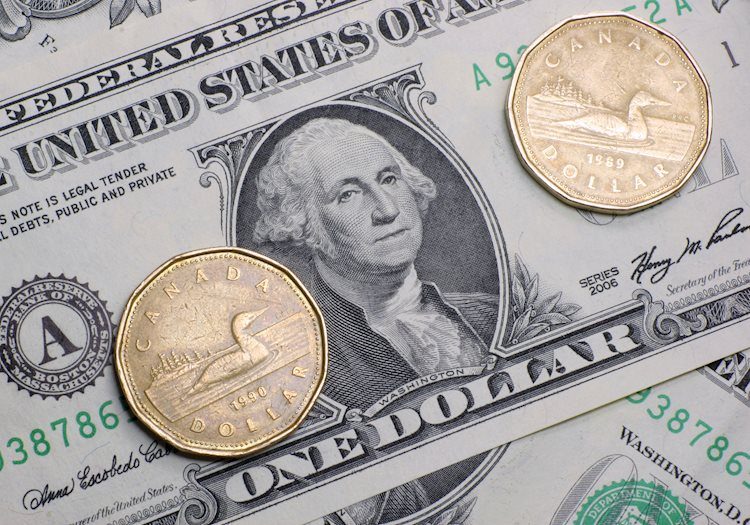- USD/CAD aims above 1.3950 with the US Dollar strengthening on Trump’s victory.
- Investors await the US CPI data for October and the commentary from a slew of Fed speakers.
- The BoC is expected to cut interest rates again by 50 bps in December.
The USD/CAD pair gathers strength to break above the immediate resistance of 1.3950 in Monday’s North American session. The Loonie pair sees more upside as the US Dollar (USD) surges to a fresh four-month high, with the US Dollar Index (DXY) rising to 105.60.
The reasoning behind Greenback’s rally is the Republican Donald Trump’s victory in the United States (US) presidential election. US fiscal deficit and inflationary pressures are expected to escalate, given that Trump vowed to raise import tariffs and lower corporate taxes in election campaigns. The scenario could force the Federal Reserve (Fed) to maintain a hawkish guidance on interest rates.
This week, investors will pay close attention to the US Consumer Price Index (CPI) for October, which will be released on Wednesday, and speeches from an array of Fed speakers for fresh interest rate guidance. Year-on-year headline inflation is estimated to have accelerated to 2.6% from 2.4% in September, with core CPI – which excludes volatile food and energy prices – rising steadily by 3.3%.
The impact of inflation is expected to be weak on the Fed monetary policy action in December unless there is a significant deviation from the consensus, as policymakers are confident about inflation remaining on track to the central bank’s target of 2%.
In the Canadian region, rising expectations of more interest rate cuts by the Bank of Canada (BoC) have weighed on the Canadian Dollar (CAD). BoC rate cut prospects have strengthened as Friday’s labor market data showed weak labor demand. The Canadian employment report showed that the economy added 14.5K workers, lower than estimates of 25K and from 46.7K in September. The Unemployment Rate remained steady at 6.5%, which was expected to accelerate to 6.6%.
The BoC reduced its key borrowing rates by 50 basis points (bps) by 3.75% in October and is expected to deliver a similar move in the December meeting.
Canadian Dollar FAQs
The key factors driving the Canadian Dollar (CAD) are the level of interest rates set by the Bank of Canada (BoC), the price of Oil, Canada’s largest export, the health of its economy, inflation and the Trade Balance, which is the difference between the value of Canada’s exports versus its imports. Other factors include market sentiment – whether investors are taking on more risky assets (risk-on) or seeking safe-havens (risk-off) – with risk-on being CAD-positive. As its largest trading partner, the health of the US economy is also a key factor influencing the Canadian Dollar.
The Bank of Canada (BoC) has a significant influence on the Canadian Dollar by setting the level of interest rates that banks can lend to one another. This influences the level of interest rates for everyone. The main goal of the BoC is to maintain inflation at 1-3% by adjusting interest rates up or down. Relatively higher interest rates tend to be positive for the CAD. The Bank of Canada can also use quantitative easing and tightening to influence credit conditions, with the former CAD-negative and the latter CAD-positive.
The price of Oil is a key factor impacting the value of the Canadian Dollar. Petroleum is Canada’s biggest export, so Oil price tends to have an immediate impact on the CAD value. Generally, if Oil price rises CAD also goes up, as aggregate demand for the currency increases. The opposite is the case if the price of Oil falls. Higher Oil prices also tend to result in a greater likelihood of a positive Trade Balance, which is also supportive of the CAD.
While inflation had always traditionally been thought of as a negative factor for a currency since it lowers the value of money, the opposite has actually been the case in modern times with the relaxation of cross-border capital controls. Higher inflation tends to lead central banks to put up interest rates which attracts more capital inflows from global investors seeking a lucrative place to keep their money. This increases demand for the local currency, which in Canada’s case is the Canadian Dollar.
Macroeconomic data releases gauge the health of the economy and can have an impact on the Canadian Dollar. Indicators such as GDP, Manufacturing and Services PMIs, employment, and consumer sentiment surveys can all influence the direction of the CAD. A strong economy is good for the Canadian Dollar. Not only does it attract more foreign investment but it may encourage the Bank of Canada to put up interest rates, leading to a stronger currency. If economic data is weak, however, the CAD is likely to fall.
Read the full article here

